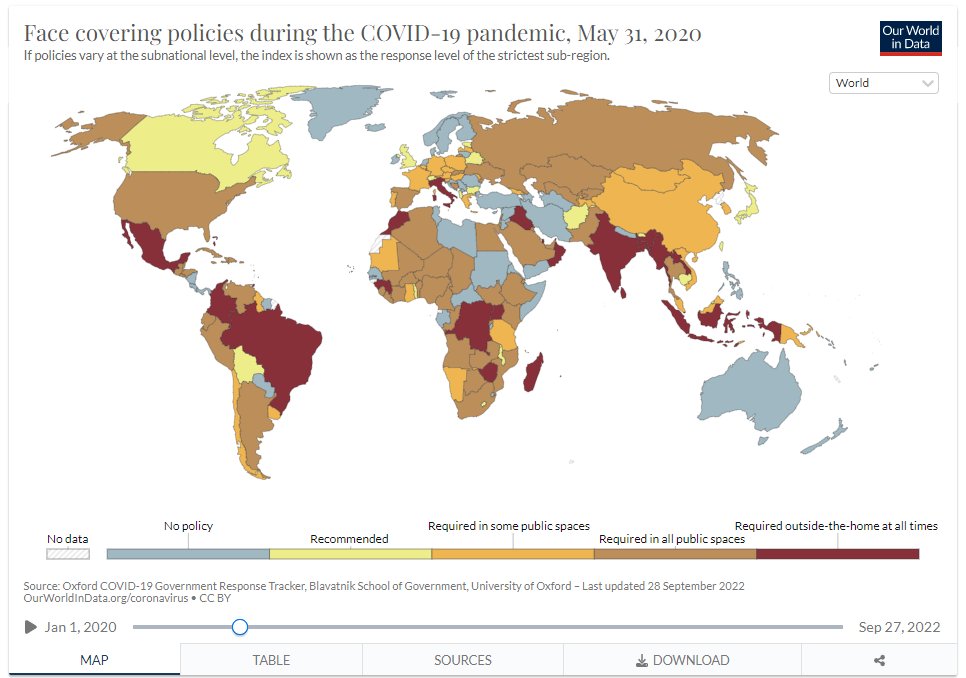Excess mortality across the world with the World Mortality Dataset - officially published at @eLife!
elifesciences.org/articles/69336
A thread on data, findings, and more.
1
(Illustration by Gal Kabiri)
elifesciences.org/articles/69336
A thread on data, findings, and more.
1
(Illustration by Gal Kabiri)

Excess mortality - increase of the all-cause mortality expected mortality based on historic trends, has long been used to estimate the death toll of pandemics and other extreme events. From the 17th century at least up to more recent events like Hurricane Maria in 2017.
2
2
No matter how estimate are made, they require data on all cause mortality. In #WorldMortality Dataset we have collected data from over 100 countries and territories from all corners of the world.
3
3

#WorldMortality builds upon and significantly expands on efforts to collect and report mortality data from @EU_Eurostat @HMDatabase @FinancialTimes @TheEconomist
WMD is open to all and constantly updated: dagshub.com/akarlinsky/wor…
4
WMD is open to all and constantly updated: dagshub.com/akarlinsky/wor…
4
Our findings show significant excess mortality in many countries from all over the world, both in absolute numbers, per capita terms and increase from expected mortality.
Even if countries had not tested or reported COVID - it's easily detectable in excess mortality.
5
Even if countries had not tested or reported COVID - it's easily detectable in excess mortality.
5

In many countries, COVID deaths are likely heavily undercounted, with excess deaths being 2, 3, 5, 15, 30 and even 50 to 100 times higher.
So while Mexico reported 235K COVID deaths, excess > 468K. Russia reported 136K, excess > 550K. Nicaragua reported 137. excess > 6900.
6
So while Mexico reported 235K COVID deaths, excess > 468K. Russia reported 136K, excess > 550K. Nicaragua reported 137. excess > 6900.
6

In other, mostly advanced countries, undercounting is not as high and has been decreasing through time, most likely due to ILI suppression in the winter months.
7
7

We break down excess deaths into its' factors and discuss them one by one.
Evidence tend to show that (C) and (D) are small, with deaths from traffic accidents, homicides, suicides ~same or even lower (except in the US which seems to be an outlier).
8
Evidence tend to show that (C) and (D) are small, with deaths from traffic accidents, homicides, suicides ~same or even lower (except in the US which seems to be an outlier).
8

As for lockdown-caused-deaths, we find very little evidence for it.
Excess mortality is exactly the measure to test this hypothesis - it's a catch-all-measure that would have shown it if it was true.
9
Excess mortality is exactly the measure to test this hypothesis - it's a catch-all-measure that would have shown it if it was true.
9

To get excess deaths estimates, we need to obtain "expected deaths" estimates first. We do this with a simple and efficient model for each country that accounts both for annual trend (e.g. aging pop) and seasonality (winter deaths higher).
10
10

Summing up excess mortality estimates across all countries in our dataset = 4.0M excess deaths. while total offical COVID-19 deaths = 2.9M deaths,
corresponding to the global undercount ratio of 1.4.
11
corresponding to the global undercount ratio of 1.4.
11
We posit that this is a lower-bound, as there is ample evidence that among the countries for which the all-cause mortality data are not available the undercount ratio is high - India, Indonesia, ME, Africa etc.
12
12
Just as countries collect and regularly report estimates of economic output such as the gross domestic product and COVID-19 mortality, they should be reporting all-cause mortality. Importance of CRVS improvements such as @VitalStrat cannot be understated.
13
13
I would like to thank many colleagues and organizations from around the world who helped, commented, shared and provided data - some even under threat of repression.
14
14

@GidMK @DrEricDing @confidencial_ni @eurasianet @FT @TheEconomist @Atila07619 @timriffe1 @TheRedLinePod @TheRealDAGsHub @KoheletForum @midaat @COVID19actuary @AdeleGroyer @Rukmini @FleuryPayeur @HebrewU @ojwatson92 @OurWorldInData
@DrSamira_Asma @dapalr @Capyvara @otavio_ranzani @Zforever @mariorz @LaurianneDsp @PopulationEU @Marco_Piani @muradbanaji @labdatero
@paldhous @DYoma_Online @AlejandroC_IQ
@BoliGrafica @ScienceBasedMed @CT_Bergstrom @helleringer143 @tylerblack32 @stuartbasten @paeguiguren @andras_io @lsempe @amrutabyatnal @CovidSerology @ikashnitsky
@BoliGrafica @ScienceBasedMed @CT_Bergstrom @helleringer143 @tylerblack32 @stuartbasten @paeguiguren @andras_io @lsempe @amrutabyatnal @CovidSerology @ikashnitsky
• • •
Missing some Tweet in this thread? You can try to
force a refresh



















